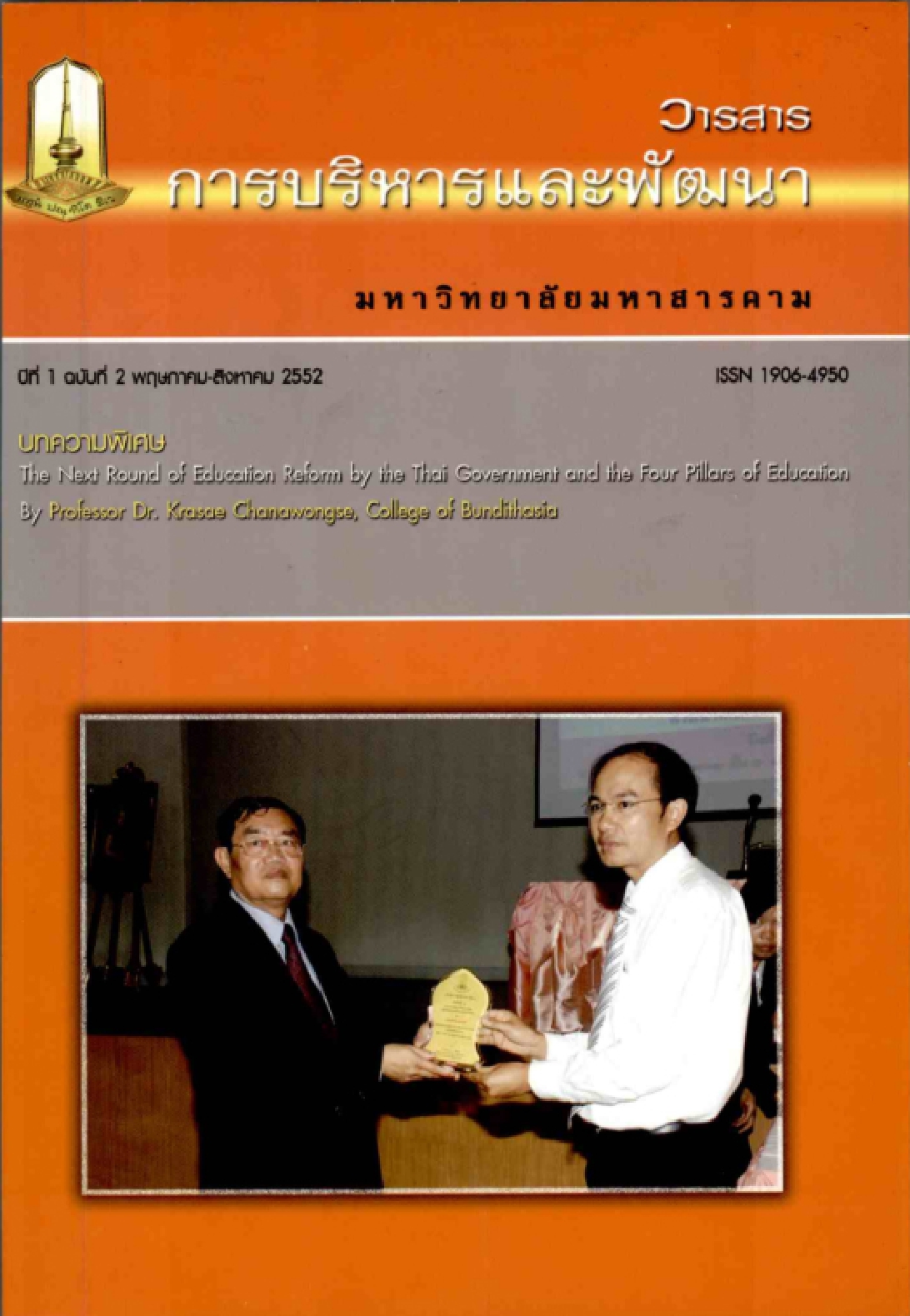Bridging the Gap between CLT and CBI Theories and Practices in Thai Small Rural Schools
Main Article Content
บทคัดย่อ
Learning reform has been proposed in Thailand as it is clearly specified in the basic curriculum that the learning and teaching EFL shall be based on communicative and content- based approaches. This paper reports the issues which face EFL teachers and a trainer in attempting to introduce and implement CLT and CBI in small rural schools in which the teachers have only a basic level of fluency in English. Participant feedback during training is presented. The results of classroom observation are also reported. It is further suggested that there is a need for support both in knowledge of English language knowledge and pedagogi- cal knowledge.
Downloads
Article Details
เอกสารอ้างอิง
Bilash, O., & Kwangsawad, T. (2004). Factors influencing Thai teachers' abilities to adapt CLT in their classrooms: A collaborative action research study. ThaiTESOL Bulletin, 17, 1-10.
Canale, M., & Swain, M. (1980). Approach to communicative competence. Semeo Regional Language Center, Singapore.
Davies, S. (2003). Content-based instruction in EFL context. The Internet TESL Journal, 2, 112-116. Retrieved January 12, 2004, from http://iteslj.org/Articles/Davies-CBI.html
Greenleaf, C. (2004). Content-based language instruction for young learners, & students centered learning. Retrieved January 16, 2004, from http://65.113.70.41/oelp/?fuseaction=view _ reports3&method=&rc=EA&rt=&sc=
Littlewood, W. (1981). Communicative language teaching: An introduction. New York: Cam- bridge University Press.
Met. M. (1999). Content-based instruction: Defining terms, making decisions. NFLC Reports. Washington, DC: The National Foreign Language Center.
Ministry of Education, Thailand. (2001). Basic Education Curriculum B.E. 2544 (A.D. 2001).Ministry of Education, Thailand.
Short, D. J., (1997). Reading and writing and ... social studies: Research on integrated lan-guage and content in secondary classrooms. In: M.A. Snow & D. Brinton (eds.), The Content-based classroom. New York: Longman.
Stoller, F.L. (1997). Project Work: A Means to Promote Language Content. Forum, 35, 2.Retrieved from http://exchanges.state.gov/forum/vols/vol35/no4/p.2htm
Savignon, S. (1991). Communicative language teaching: State of the art. TESOL Quarterly, 25,261-276.
. (1982). Communicative competence: Theory and classroom practice. New York:Prentice Hall.
USIA. (2006). ETF Assists Ministry of Education of Thailand in carrying out proposed curricu- lum reforms. Retrieved from http://dosfan.lib.uic/edu/usia/e-usia/education/engtea-ching/rpts/ea.htm
Watson Todd, R. (2002). The ERIC Model. Retrieved October 13, 2006, from http://www.bang kokpost.net/education/site2002/cvmy1402.htm
Widdowson, H.G (1978). Teaching language as communication. Oxford; London: Oxford University Press.


